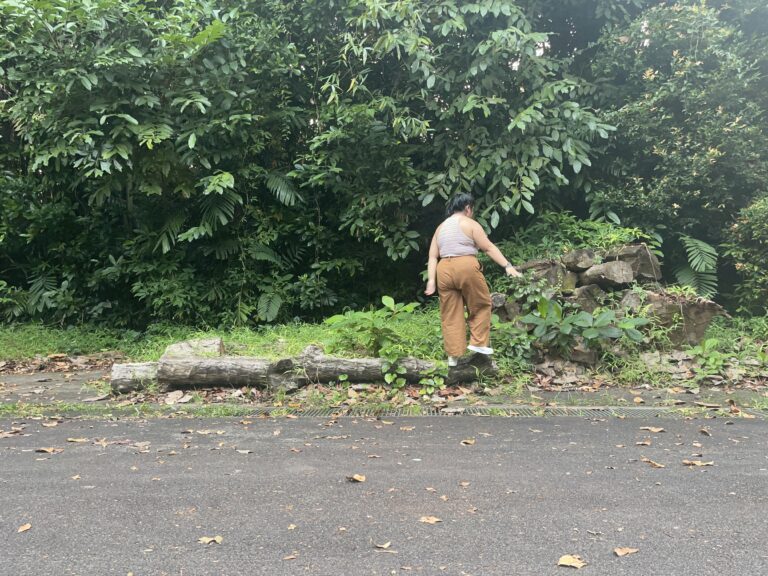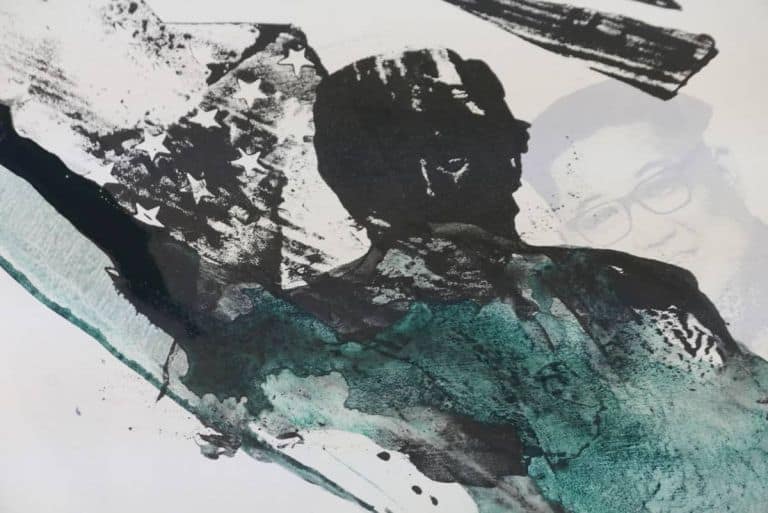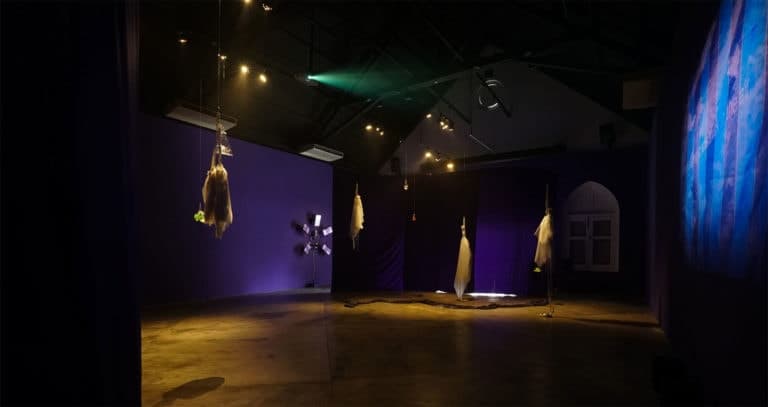If you’re a space nerd, the title of Dr Susie Lingham’s latest solo show — Thought Sample Return — will surely strike a chord. Executed by a spacecraft that collects extraterrestrial material and brings it back to Earth for analysis, a ‘sample-return mission’ can be understood as an attempt to fathom the vast unknown that surrounds us.
But Dr Lingham’s show isn’t so much about outer space, as it is about “inner space”. Currently on view at Gajah Gallery, Thought Sample Return is an expedition into the far reaches of the mind — a realm that’s much closer to home, but no less expansive.

With dissected Klein bottles, references to quantum mechanics, and bored-through copies of the Encyclopedia Britannica on view, the show certainly comes off as erudite. But in no way is it inaccessible or humourless. If anything, Thought Sample Return asks us to share in the spirit of playfulness that drives Dr Lingham to cast her lines of inquiry simultaneously across the disciplines of art, science, literature, and philosophy.
What can we make of this art? Is it art even?
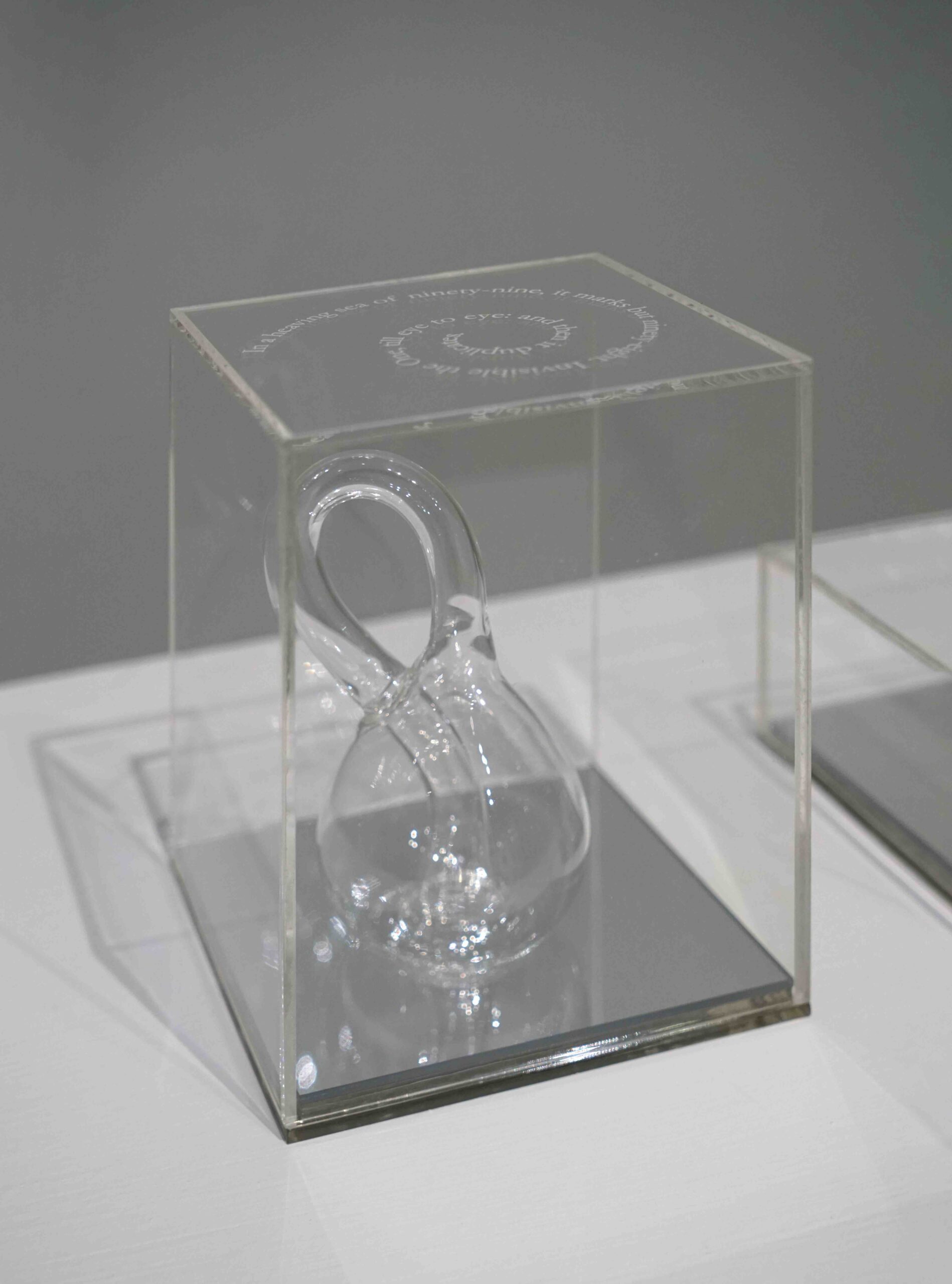
The centrepiece of the show is a series of encased glass bottles which look like they’re consuming their own spouts. Like the (perhaps?) more familiar Mobius Strip, these Klein bottles have one-sided surfaces, and if you were a tiny creature skating on them, you could traverse the entire surface and return to your point of origin while being flipped upside down.
Atop the acrylic boxes are mirrors inscribed with rhyming riddles, which unfold in spirals, so you’ll have to walk around the plinth and squint to read them.
“They relate the idea of the Klein bottle, which itself is a riddle because it’s a three-dimensional object that belongs in a four-dimensional mathematical space,” explained Dr Lingham.
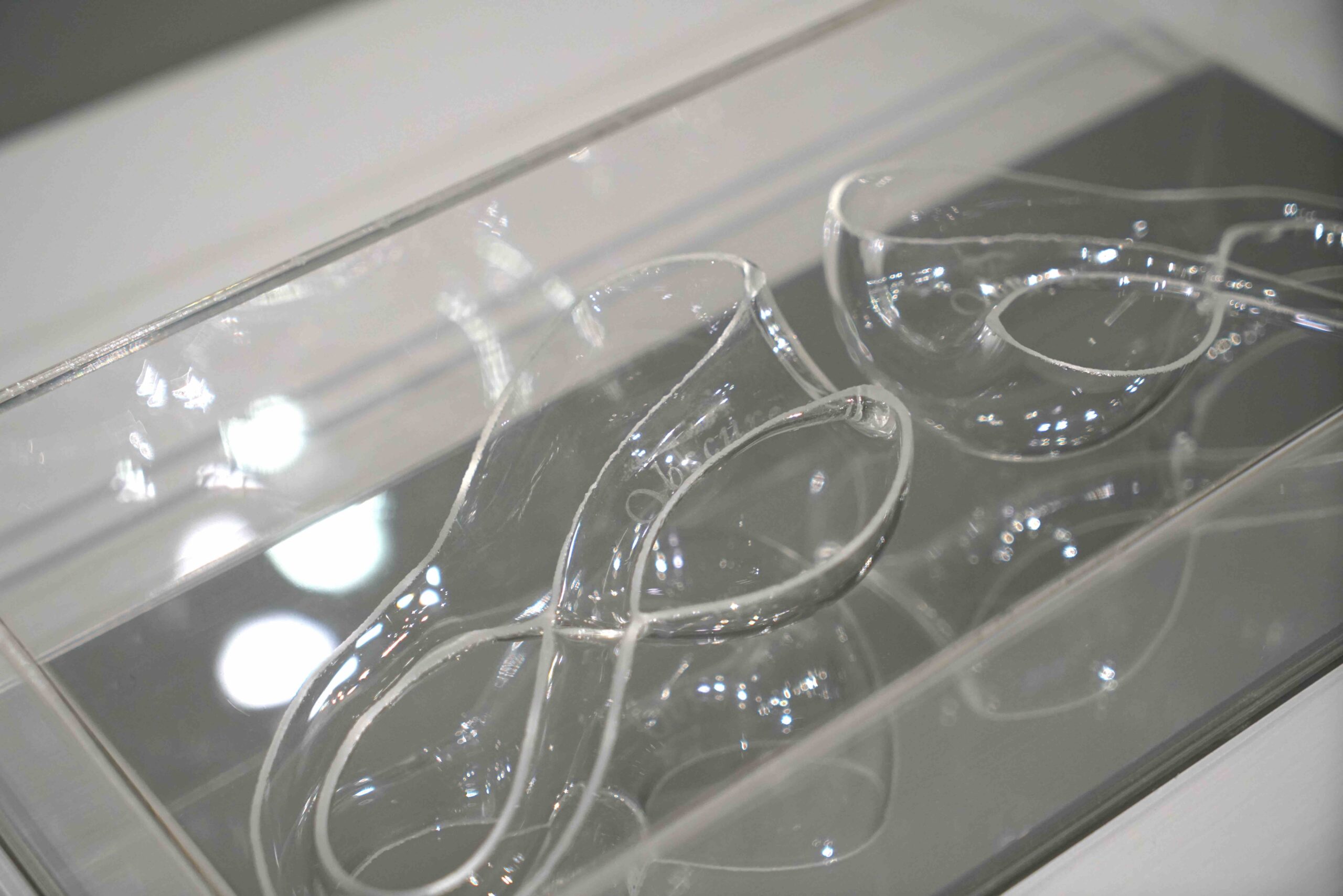
As for the clues to the riddles, you’ll find them engraved in the halved glass bottles — pairs of words that “might run up against each other,” or stand as polarities.
While there is a “right” answer to the riddle (which one viewer managed to figure out years after he first saw Dr Lingham’s Klein Riddles at the Substation), I found that the emphasis of the work, and of Thought Sample Return as a whole, is on the playful processes of taking things apart and putting them back together again, in order to gain a truer understanding of their nature.
“It’s a lot of play. It’s a conversation I’m having with my self, with my mind, with an idea,” said Dr Lingham.
“You might see a diagnosis of the human condition, but it’s not necessarily my starting point. I am really making and thinking in the abstract.”
What makes the conceptual objects in the show compelling, is that they ask us to engage with them not just visually or intellectually, but also physically.
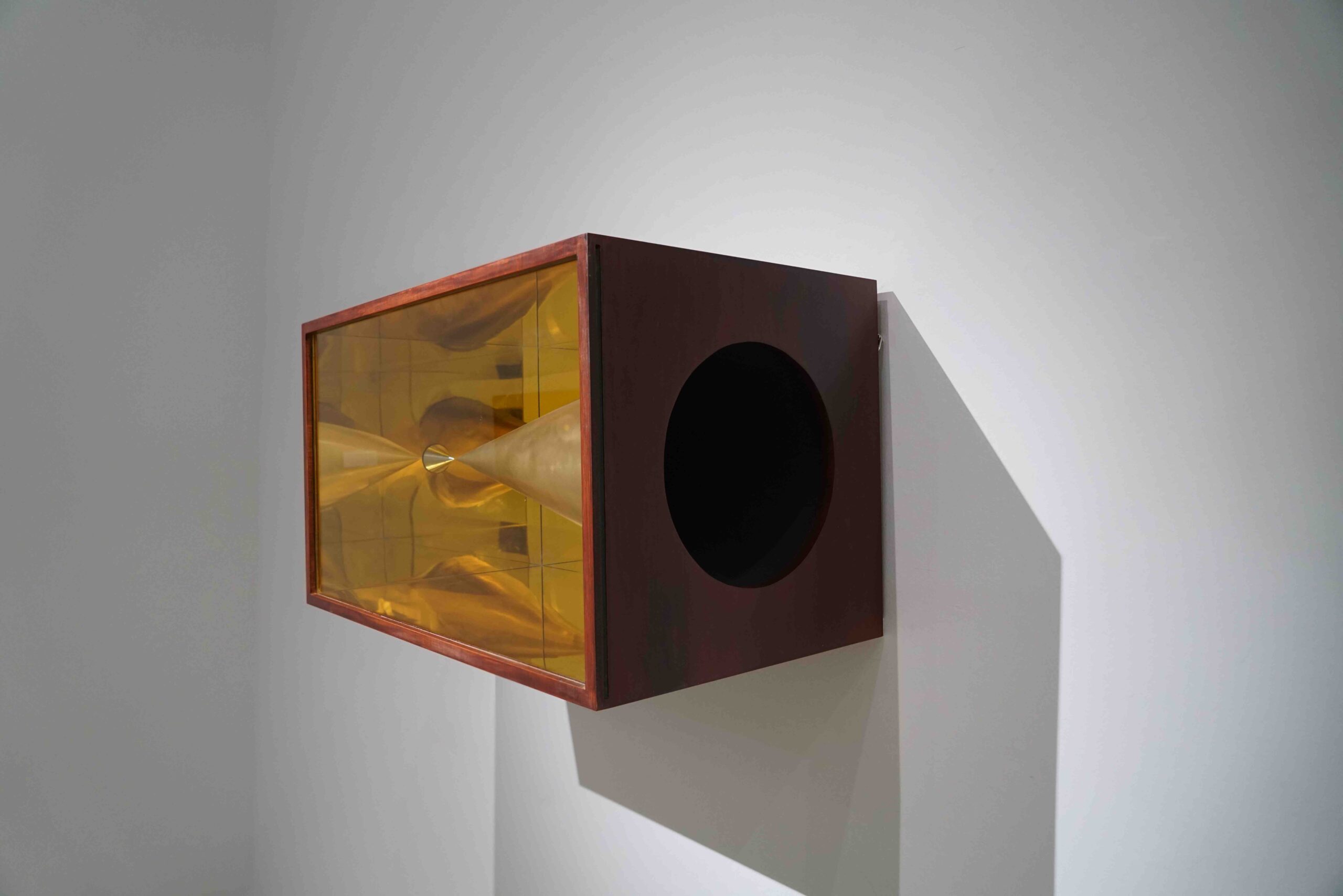
Seme : Seam : Seem (: Seam : Seme), for instance, shape-shifts depending on how you approach it. If you peer into the hollow of the larger cone, you’ll find yourself swallowed by a borderless void. But if you look at it straight-on, you’ll see your own reflection, once properly, and once distorted in the curved outer surface of the cone.
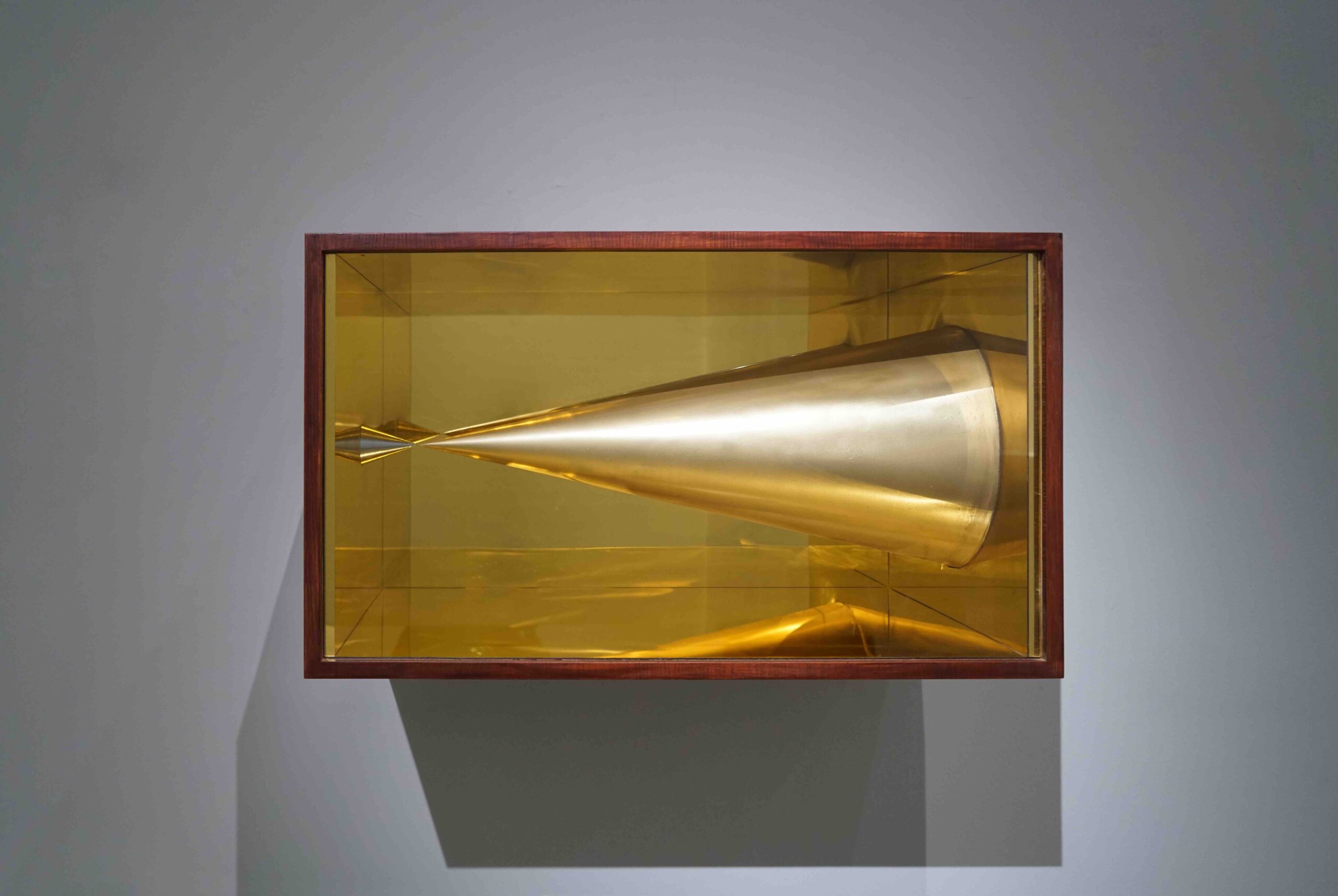
Curiously, while the sculpture looks at once like an assemblage off a mathematician’s desk, it also resembles a telescope. Or perhaps it’s a scaled-up model of the viewer’s retina, which can itself ‘enter’ the work from either side of the sculpture?
While an artwork’s title often offers clues to its meaning, Dr Lingham playfully turns this interpretative key into a riddle itself. The three homonyms are themselves mirrored, so the title begins and ends with “Seme”, just as each cone appears to be a disproportionate reflection of the other.
In my interpretation of this cryptic piece, Seme : Seam : Seem (: Seam : Seme) probes the boundaries (or seams) between knowledge (a ‘seme‘ is the smallest linguistic unit of meaning) and perception (things are often not what they seem to be).
“So much of my work is about the philosophy of mind […] that aspect of the conscious mind that identifies as an eye,” Dr Lingham mused.
And what of the unconscious mind? “Psychoanalysis brought it to the fore but philosophy has never dared to touch it in that way,” explained Dr Lingham.
The unconscious mind simply doesn’t answer to a “logical line of inquiry”, she continued, as she highlighted the need for interdisciplinary understanding.
“Having to categorise [my] practice […] that has always been a difficult thing for me. I sculpt, but I cannot call myself a sculptor… And why is it so important? Who is it so important for?”
As an autodidact, Dr Lingham was always fascinated by things that had nothing to do with the prescribed curriculum. Curated by John Tung, Thought Sample Return offers us a sampling of her wide-ranging interests, while drawing out the connective tissues between them.
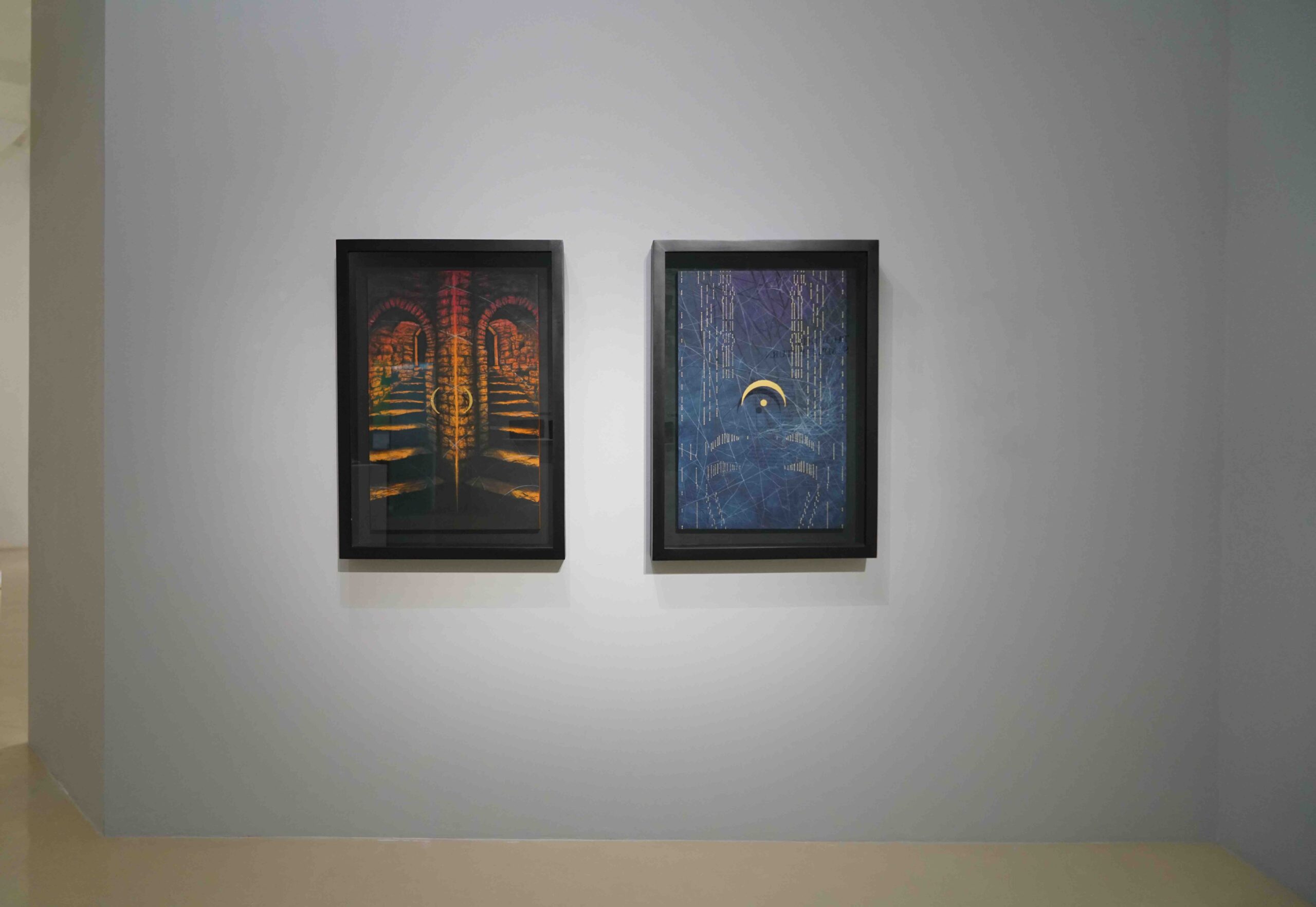
With the musical sign for a pause as its central motif, Meanwhile (above, right) points to music as a system for charting silences — the negative spaces in time that make sound significant. (Stochastic Hold), (above, left) which hangs alongside Meanwhile, grapples with the idea of the void in a similar vein. Stochastic processes and models are used to map out the random motion of minute particles in space, which the parentheses that are affixed to the glass frames of the paintings, allude to.
Thought Sample Return sensitises us to the ways in which every discipline — be it maths, science or visual art — offers us a different set of mental models for making sense of the world. And if we’re going to tackle metaphysical questions of knowledge, perception and consciousness, it makes sense to have several toolboxes at our disposal.
In our conversation, the artist brought up Emily Dickenson’s poem, Your thoughts don’t have words every day. Words, like any system of meaning (art, literature or religion, for instance), aren’t sufficient to accommodate the fluid nature of the mind, which pulses, flows and makes unconscious, associative leaps of logic.
“It’s about not worrying about the categories,” said Dr Lingham, who’s been interested in interdisciplinary thinking long before it was “hip”.
What draws together the show’s manifold, and often niche allusions, giving it coherence and resonance, is its commitment to getting the audience to think about thinking, and to see themselves seeing. Thought Sample Return is unabashedly cerebral and self-reflexive — meta even. It’s refreshing to see a show that has so clearly grown out of the research and the visual language that Dr Lingham has developed over the last twenty years.
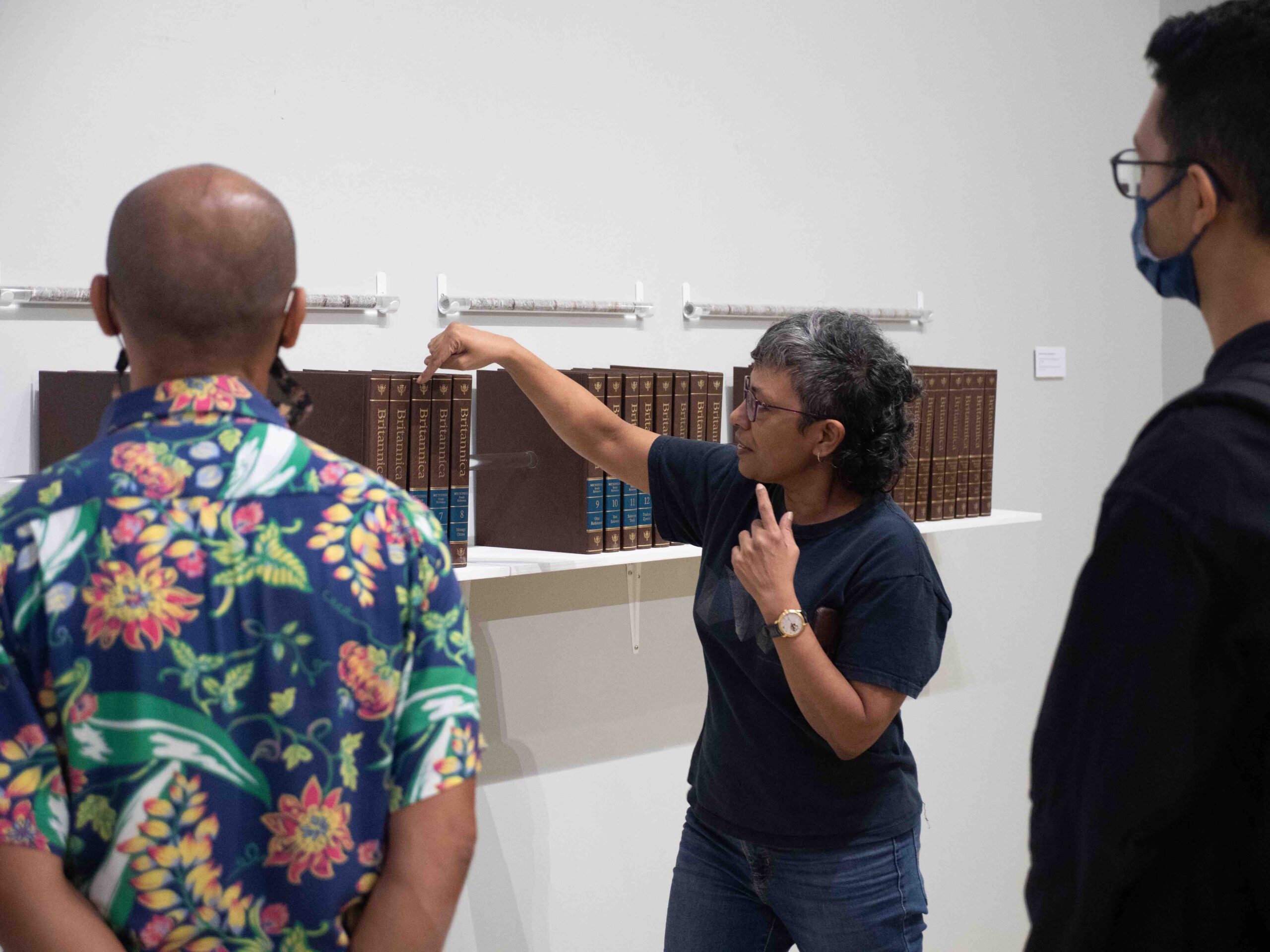
But wait a minute, wasn’t Dr Susie Lingham part of the controversial 5th Passage?
The next challenge, then, is to consider Dr Lingham’s practice in the context of the pivotal role that she has played in developing the contemporary arts scene in Singapore, as a founding member of the seminal artist-run initiative 5th Passage, as the Director of the Singapore Art Museum, and in her various roles as writer, curator, theorist and educator.
Having read the press release, which presented the show as part of the Gallery’s ongoing efforts to champion artists associated with 5th Passage (a welcome project that grew out of the Gallery’s keen survey of the initiative last year), I expected to see older works, or perhaps a more historical slant. But when I asked Dr Lingham if her works here could be “traced back to her time with the initiative”, she answered that 5th Passage doesn’t figure in Thought Sample Return.
In the show’s spirit of border-crossing, perhaps it’s time to move past trying to read Dr Lingham’s practice through the familiar narrative of avant-garde art initiatives vs. the state. Her practice clearly transcends this. Arguably, it’s necessary and important to trace the beginnings of an artist’s practice, but we shouldn’t let past controversies colour, or even limit our view of their newer work.
What kinds of attitudes, then, would her ideal audience possess? “Open-mindedness,” chipped in her nephew, who was present at our conversation. “Some curiosity, not needing to categorise things as belonging to contemporary visual art, and allowing what you encounter to speak to you,” added Dr Lingham.
And there you go – be receptive and curious when visiting this show, and you’ll be rewarded with a fruitful voyage into the deep space of the mind.
_________________________________________________
Thought Sample Return runs till 28 August 2022 at Gajah Gallery.







